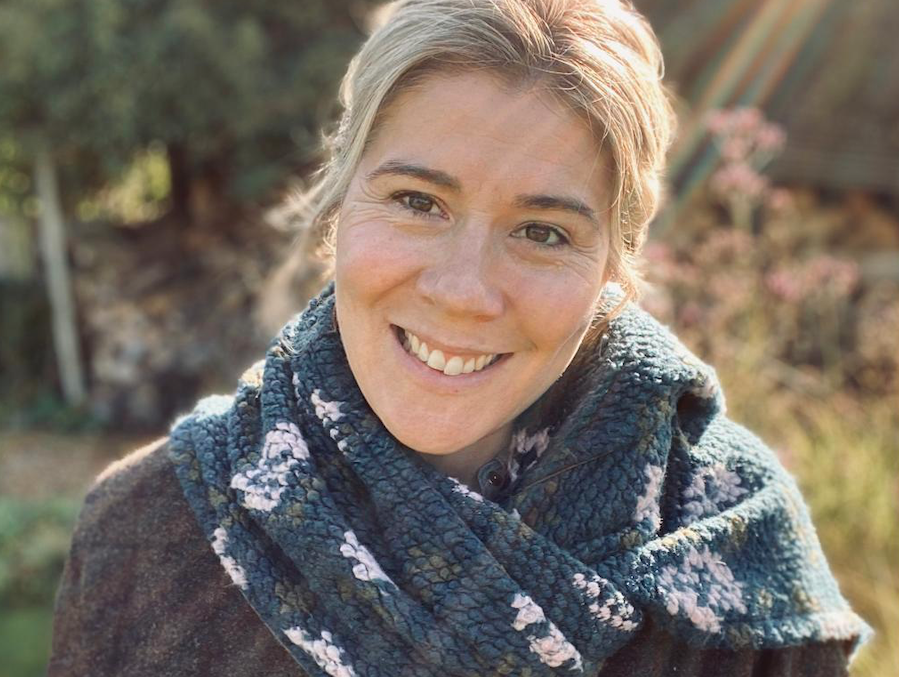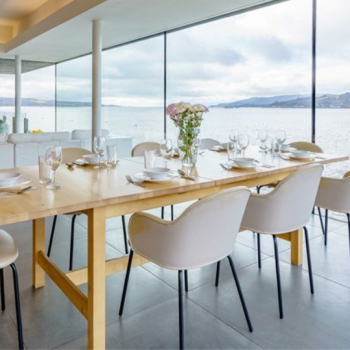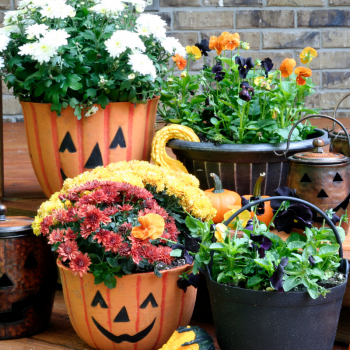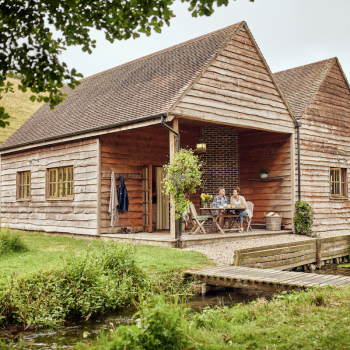Georgie Steward’s March Gardening Club

It’s game on now! Spring is definitely here. The days are getting longer, the dawn chorus is incredible and I am making the most of the lighter mornings to get things done! But March can be chilly and there is often a sting in the tail so be careful of those frost warnings!
Trees
We have been busy planting barefoot crab apples here – it is best to get any trees or shrubs ideally planted before the end of the month so they can get their roots down before we hit the drier season. Dig a square hole twice the width of the rootball but don’t make it too deep. Loosen the soil around to encourage a good root run. I always put a good mulch on top once I have watered. And stake to avoid wind rock in the early days of establishment.
Propagate
Sowing seeds brings me so much joy! And I really urge you to give it a go if you haven’t already. You will get hooked I am sure. Most things can be planted directly in the ground later in the year but I am desperate to get going and I find I loose tiny seedlings in the midst of weeds if I’m not careful.
Cosmos
Mid/end March I begin to sow my half hardy annuals – things like Cosmos which are an invaluable bloom for mid/late Summer. They come in a huge range of colours and add a welcome vibrancy to a mid/late Summer border. Sow them undercover this month – two seeds to a module – thinning out to one as they grow, and then plant them out in the garden once the risk of frost has past, spaced about 16 inches apart. They will need staking – I either use jute netting spread horizontally across my cut flower bed or individual stakes. You must then pick and deadhead at least once a week to keep those flowers coming! They are some of the most productive plants in your cutting garden and should give you buckets over July/August and September.
Tomatoes
It’s also a good month to sow tomatoes. They are probably my favourite veg/fruit to grow. This year I thought I would try one called Indigo Rose which is almost black. I sow mine thinly in a half standard seed tray on to moist compost and cover lightly. They are from the Mediterranean so like a bit of warmth – bottom heat would be ideal or a warm window sill is sufficient. Once they have formed one set of true leaves (like the parent plant), prick them out and plant them into their own individual 9cm pot. If they have become tall and leggy, you can bury them a bit deeper at this point to encourage better root growth. Then put them back on to bottom heat if you have it and wait for roots to show at the bottom of the pot. At this point you can plant out in the greenhouse at the beginning of May. If you want to have them outside I would wait another month. I always plant mine using ring culture pots and feed in the central hole and water in the outer ring. Pinch out all the side shoots, in between the main stem and the leaf stems to encourage better fruit growth. I either use a cane to stake or twine of some sort tensioned up to the top of the greenhouse and then pinch out the leader tip once the plant reaches a good height.
Salad Leaves
A great way to sow salad leaves is in a piece of gutter piping – I like to sow rocket, mustard leaves and lettuce using this method as they grow into decent size plants and can be scrape from the gutter directly into a veg bed in about a months time! Sow the seed very thinly down the centre of the gutter piping (filled with peat free compost), cover lightly, water, label and wait for germination which should take about a week.
It’s also a great time to take basal cuttings from some of your perennials that are just sprouting now – things like Phlox, Delphiniums, Lupins – look for fresh new growth and dig down beneath the soil following the stem down, cut with a sharp knife and pot up in a gritty compost mix. Cover with a polythene bag and give some bottom heat if you have it – not essential though. Terracotta pots are good for this as they allow good drainage, particularly if you place your cuttings around the edge of the pot, and warm up nicely.
 Planting Out
Planting Out
If you have been overwintering any plants such as Orlaya grandiflora, Ammi majus, Cornflowers, Poppies, sweet rocket etc and have been hardening them off in a coldframe/ putting them out in the day, bringing them in at night, you will be able to start planting these out in the ground this month. Keep an eye on the weather and if there is going to be a hard frost, give them a little extra protection with some horticultural fleece. I have been growing lots of poppies over the winter, controversially in modules/pots as poppies don’t like their roots being disturbed, and I will be planting them out in the ground this month. They are the most gorgeous flower – so simple but so pretty – and this year I have tried a few different types – the Dixter named Beth’s Poppy, a clear pink single poppy and the Iceland poppies which I always have problems getting to germinate! If I can crack it I will be amazed!
 Dahlias
Dahlias
It’s time to start getting excited about these beauties. There is still time to order if you haven’t! It’s a good idea to start them off in the greenhouse, or inside, so you can pounce the new shoots as they emerge and make more plants from taking cuttings. Even if you don’t want to make more, it is good to get them going now and you can then plant them straight out in the garden when the frost has passed. For now, pot them up into some nice compost, water a tiny bit, keep somewhere warm and light and wait for the new shoots to appear.
Prune
Hydrangea macrophylla – the traditional mophead hydrangea can be pruned lightly now – down from the old flower head to the next pair of healthy buds. If however, like mine, they are looking a bit of a woody mess, you can prune these much harder to completely rejuvenate the plant. This type of hydrangea flowers on old wood and therefore removing too many of these stems may well forego flowers this year. First identify those long cinnamon coloured smooth stems that did not flower last year – these you want to keep! Then look to remove the majority of the stems that flowered last year right down to the base – these old stems are generally more grey in colour. This will encourage fresh new growth from the base and therefore fantastic flowers next year.
Hydrangea arborescens ‘Annabelle’ and Hydrangea paniculata ‘Limelight’ can both be cut back hard (even to the ground if you like) as they will flower entirely on new growth this year. Do consider that it might be worth keeping a small part of the woody stem structure at the base so that they are strong enough to bare the weight of those huge blooms in August!
 Please wait while we create your listing....
Please wait while we create your listing....



 Follow fanatical gardener and plantaholic Georgie on instagram
Follow fanatical gardener and plantaholic Georgie on instagram 

